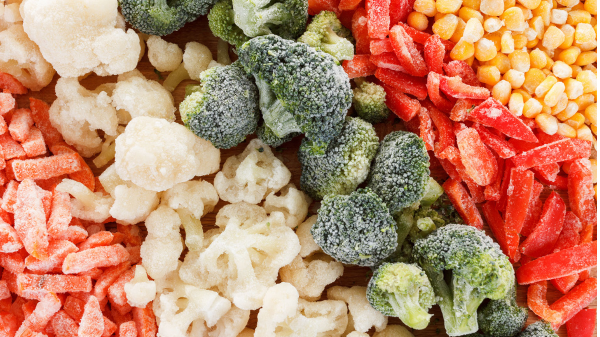November 14, 2022 ARLINGTON, Va.–(BUSINESS WIRE)–A new survey finds that more than a quarter of shoppers are buying more frozen fruits and vegetables than three years ago and identify many benefits with these foods.
Frozen fruits and vegetables help make it easier for a variety of households and demographic groups to easily increase their produce consumption and reduce their food waste.
Overall, penetration in the U.S. is high, with 94% of American households buying frozen fruits and vegetables.
The American Frozen Food Institute (AFFI) commissioned 210 Analytics to survey a diverse range of households modeled to the U.S. Census to better understand shopper perceptions, shopping habits and applications of frozen fruits and vegetables.
The report, Frozen Fruits & Vegetables: Perceptions, Uses and Expectations among U.S. Consumers and SNAP-Eligible Households, revealed that the widespread purchase and use help increase produce consumption.
Among the more than 1,500 consumers surveyed, the majority (86%) agreed that having frozen fruits and vegetables makes it easier to eat more produce. Eighty-three percent reported that frozen fruits and vegetables help them to reduce food waste and save money due to the key attributes of frozen such as a longer shelf life and ability to only prepare what you need. Additionally, 76% of respondents agreed that frozen fruits and vegetables help them eat produce that they otherwise may not know how to prepare.
“The frozen food category offers a variety of solutions for today’s consumers, and frozen fruits and vegetables remain an important component,” said AFFI President and CEO Alison Bodor. “This survey confirms that shoppers are finding different applications and benefits as they integrate these products into their meals.”
The sales of frozen fruits and vegetables in the U.S. reached $7.1 billion over the 52-week period ending June 26, 2022, and product volume was 271 million pounds above pre-pandemic levels at 3.9 billion pounds. The top products within the segment were plain vegetables, potatoes and onions, and fruit, with sales of $2.9 billion, $2.3 billion and $1.5 billion, respectively.
Shoppers integrate frozen produce in many different ways during mealtime. The most popular uses of frozen fruits and vegetables were as sides to a main entrée (63% of all frozen fruits and vegetables buyers reported this usage), as ingredients in beverages and smoothies (50%) and as additions to pasta and rice dishes (44%).
Nearly all shoppers also reported that they bought both fresh and frozen produce and relied on frozen fruits and vegetables to help hold them over between shopping trips when low on fresh produce. This data aligns with findings in AFFI’s Power of Frozen 2021 market research which found that most consumers integrate both fresh and frozen produce in their meal planning.
The survey also included a special review of households that meet eligibility guidelines for the Supplemental Nutrition Assistance Program (SNAP). Eight out of 10 SNAP-eligible survey respondents agreed that frozen fruits and vegetables make it easier to eat more produce, prevent food waste and help save money. These findings indicate the important role frozen food plays in federal feeding programs.
“As the food industry and policymakers explore ways to improve nutrition and reduce hunger across the country, frozen foods must be part of the solution,” added Bodor. “Shoppers recognize that frozen fruits and vegetables offer an easy and convenient way to further include produce into their diet, all while stretching their dollar further thanks to the reduced waste.”
Media may obtain a complimentary copy of Frozen Fruits & Vegetables: Perceptions, Uses and Expectations among U.S. Consumers and SNAP-Eligible Households by contacting newsroom@affi.com. This report was made possible by Hillphoenix.
About AFFI
The American Frozen Food Institute is the member-driven national trade association representing all segments of the frozen food supply chain from manufacturers to suppliers and distributors. AFFI advocates before legislative and regulatory entities on the industry’s behalf, serves as the voice for the industry and convenes industry leadership to create an environment where frozen foods are essential in a dynamic marketplace. www.affi.org
Contacts
Mary Emma Young
meyoung@affi.com
443-904-3937



